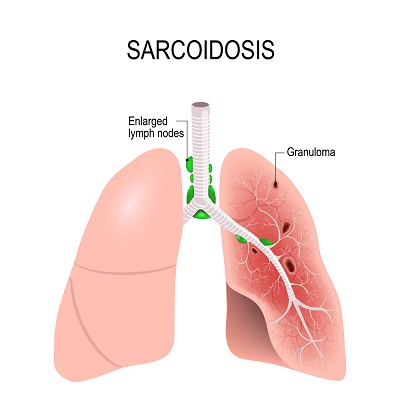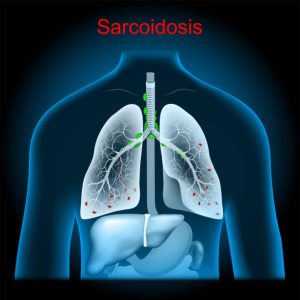Sarcoidosis is an inflammatory disease that affects multiple organs in the body, but mostly the lungs and lymph glands. In people with sarcoidosis, abnormal masses or nodules (called granulomas) consisting of inflamed tissues in certain organs of the body. These granulomas may alter the normal structure and possibly the function of the affected organ(s).
Sarcoidosis in the lungs is called pulmonary sarcoidosis. It causes small lumps of inflammatory cells in the lungs. These lumps are called granulomas and can affect working of the lungs. The granulomas generally heal and disappear on their own. But, if they do not heal, the lung tissue can remain inflamed and become scarred and stiff. This is called pulmonary fibrosis. It changes the structure of the lungs and can affect your breathing.


